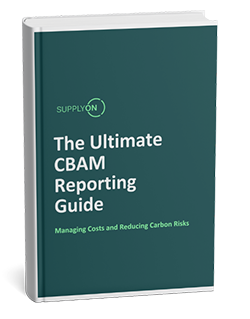The 3 Biggest Challenges Importers Face Under CBAM (And How to Solve Them)

The EU’s Carbon Border Adjustment Mechanism (CBAM) is reshaping global trade, particularly for companies importing goods like steel, cement, and aluminum into the EU. CBAM, designed to curb carbon leakage, introduces a new set of compliance requirements, posing significant challenges for importers. These challenges center around carbon reporting, administrative burdens, and potential supply chain disruptions. Understanding and addressing these hurdles will be key to maintaining smooth operations in this new environment.
1. Complexity of Carbon Reporting Requirements
CBAM aims to create a level playing field by ensuring that imported goods carry a carbon cost similar to those produced within the EU. However, this introduces complexity for importers, who are now responsible for accurately tracking and reporting the carbon emissions associated with their goods.
Obtaining consistent and reliable emissions data from non-EU suppliers can be particularly difficult, as environmental regulations and reporting standards vary across regions. Verifying the accuracy of third-party emissions data can also be time-consuming, creating potential bottlenecks in the import process. Incomplete or inaccurate data increases the risk of customs delays and non-compliance penalties.
To address this challenge, companies are focusing on enhancing communication with suppliers about emissions reporting. Many are also turning to digital tools to streamline the tracking and verification of carbon data, ensuring that information is accurate and compliant with EU standards. These measures help reduce delays and ensure smoother customs processing.
2. Increased Administrative Burden on Importers
CBAM introduces an additional layer of paperwork to the customs process, significantly increasing the administrative burden on importers. Beyond the standard declarations of goods’ nature and value, companies must now also report their associated carbon emissions. This creates added complexity for businesses already managing a range of regulatory requirements.
Integrating CBAM reporting into existing customs workflows can be particularly challenging. Without proper management, this additional documentation risks slowing down operations and increasing the likelihood of submission errors. The larger the volume of paperwork, the greater the chances of mistakes or omissions, leading to delays at customs.
To streamline this process, many companies are automating parts of their documentation workflows, using software tools that incorporate carbon emissions reporting into existing customs procedures. Additionally, investing in training for customs teams on CBAM requirements helps minimize errors and improves overall efficiency.
3. Risk of Supply Chain Disruptions
The introduction of new CBAM documentation requirements also poses a significant risk of supply chain disruptions. Customs clearance can be delayed if the required paperwork is incomplete or inaccurate, causing goods to be held up at the border. In industries like steel, cement, or aluminum, where timely delivery is essential, these delays can have a considerable impact on overall business performance.
Moreover, as CBAM becomes fully operational, customs agencies will need time to adapt to the new compliance standards, potentially creating bottlenecks at key trade hubs. Non-compliance with CBAM regulations could result in financial penalties, missed delivery deadlines, and, in the worst case, loss of key contracts.
To mitigate these risks, companies are prioritizing the completeness and accuracy of their CBAM-related documentation well before goods reach customs. Developing contingency plans with logistics partners also helps ensure business continuity in case of delays. Collaborating with customs experts can provide additional support in navigating the evolving compliance landscape, ensuring smoother operations under the new regulations.
Conclusion: Preparing for Success Under CBAM
While CBAM introduces new challenges for importers, these challenges can be effectively managed with the right strategies. By improving carbon data reporting, reducing administrative burdens, and addressing supply chain risks, companies can navigate the complexities of CBAM compliance smoothly. Early preparation and investment in the necessary tools and expertise will not only help businesses avoid penalties but also provide a competitive edge in the transition toward a more sustainable global trade environment.



